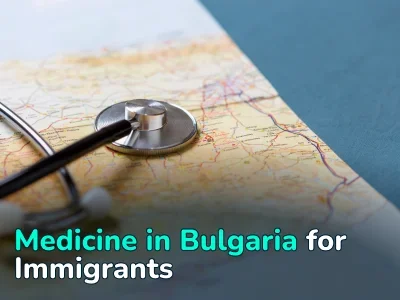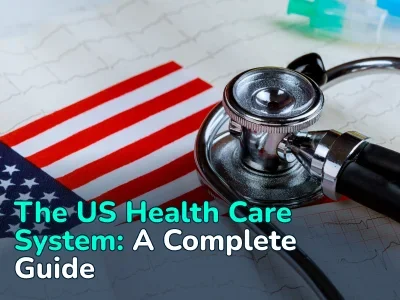
Healthcare in Italy for Immigrants: SSN vs Private Clinics
According to the World Health Organization, the healthcare system in Italy ranks 2nd in the world for the efficiency of medical services. This is indirectly confirmed by the high life expectancy in 83 years. However, for those relocating to Italy, integration into the healthcare system comes with certain nuances.
Public clinics often have long waiting times, while private centers are known for high service costs. Additional challenges include language barriers, the requirement of health insurance to obtain a residence permit, and differences in rights between legal and undocumented immigrants.
In this article, we will explore the specific features of the healthcare system in Italy and examine how both the public SSN system and private healthcare function in Italy.
General Overview of the Italian Healthcare System
Italy’s National Health Service (Servizio Sanitario Nazionale, SSN) provides universal access to healthcare services for citizens and legal residents. The SSN is managed at the regional level through local health authorities (ASL), which leads to variation in the quality and accessibility of medical services across different regions. For example, Lombardy and Emilia-Romagna typically have shorter waiting times and more advanced medical equipment than Calabria or Sicily.
The SSN health care in Italy covers a wide range of services, from general practitioner consultations to hospitalizations and subsidized medications, but requires partial co-payment (known as a ticket) for diagnostic procedures and specialist care.
Approximately 60% of public healthcare funding is transferred to private medical institutions that operate under contract with the SSN. Private clinics and hospitals in Italy offer faster service, like MRI scans, for instance, which may be available within 5–7 days compared to 3–6 months through the SSN. However, private health service in Italy is significantly more expensive: a standard consultation costs €75—150, while annual insurance policies range from €500 to €5000.
SSN medical coverage in Italy includes:
- Free healthcare in Italy. Consultations with general practitioners and pediatricians (for children under 14), emergency care, hospitalization for acute conditions (e.g., heart attacks, strokes), treatment of chronic diseases (such as diabetes or hypertension), infectious diseases (e.g., tuberculosis, HIV), prenatal care, childbirth, and child vaccinations.
- Partially subsidized services (ticket). Consultations with specialists (e.g., gynecologists, orthopedists), diagnostic services (e.g., ultrasound, MRI, blood tests).
- Exemptions and benefits. Full exemptions are available for disabled individuals, pregnant women, children under 6, pensioners over 65, and families with an annual income below €36,151. Over-the-counter medications must be paid in full by the patient, while prescription drugs are subsidized by 70–80%.
The general practitioner is a cornerstone of medicine in Italy, serving as the primary gateway into the healthcare system. They provide free consultations either at their office or during home visits and are responsible for issuing prescriptions for subsidized medications as well as referrals to specialists and for diagnostic tests.
It is important to note that medicines in Italy are strictly prescription-only. They can be prescribed by both public and private physicians.
After registering with the ASL, immigrants can choose a general practitioner from a list available in their local area. Each doctor can have up to 1500 patients. Changing your GP is allowed once a year or upon moving to a different address.
Dentistry in Italy
The public healthcare system (SSN) offers limited coverage for dental care in Italy. As a result, the majority of the dental sector is concentrated in private hands. According to ISTAT, approximately 80% of dental procedures in Italy are performed in private clinics.
The coverage of dentistry in Italy:
- Dentistry under the public system (SSN). Services are restricted and primarily available to children under 14, pregnant women, people with disabilities, low-income individuals, and patients with urgent conditions (e.g., abscesses). Free or subsidized treatments may include check-ups, diagnostics, cavity treatment, and fillings. Tooth extractions are covered in emergencies.
- Private dentistry. Offers a full range of services—from preventive care to complex procedures, such as implants and orthodontics.
Orthodontics, dental implants, prosthetics, and cosmetic treatments (e.g., veneers, whitening) are not covered by the SSN, except in rare cases with documented medical necessity (e.g., post-traumatic reconstruction).
Popular dental clinic in Italy:
- Centro Odontoiatrico San Raffaele.
- Studio Dentistico Bava.
- Vitaldent.
Access to Healthcare for Immigrants
The Italian Constitution enshrines the principle of universality, meaning that healthcare in Italy for foreigners is provided under the same conditions as for local citizens. Key aspects include:
- Legal residents. Individuals with a residence permit valid for more than 3 months are entitled to register with the SSN. Upon registration, they receive a tessera sanitaria (health card), which grants access to general practitioners and public clinics. Registration is mandatory for workers and their dependent family members.
- Refugees. They receive full access to the SSN. Registration is both mandatory and free of charge, as it is funded by the state.
- Undocumented immigrants. They can access health systems in Italy through the STP (Stranieri Temporaneamente Presenti) system. To do so, they must obtain an STP code from local ASL/ASP offices. This allows access to emergency care, treatment for infectious diseases (e.g., tuberculosis), and vaccinations.
Limited proficiency in the Italian language presents a significant barrier to healthcare in Italy for expats. Interpreter services may be available, but in remote or smaller towns, they can be difficult to find.
Registration with the SSN is free for most legal residents. However, international students pay €150 per year, while certain categories, such as unemployed individuals holding a residence permit for family reasons, must pay annual contributions ranging from €387 to €2000.
Private Healthcare System
Private clinics and hospitals in Italy generally offer a higher standard of care compared to public facilities, but services are not free. Without private insurance, patients must pay the full cost of treatment out of pocket.
Examples of private Italian health care cost:
- Specialist consultations. Orthopedic specialist — €80—150, gynecologist — €75—120, cardiologist — €100—200.
- Diagnostics. Ultrasound — €80—150, MRI — €200—400, CT scan — €150—300.
- Dentistry. Dental filling — €100—200, orthodontics (braces) — €2000—5000, dental implant — €1000—3000.
- Surgical procedures. Minor surgery (e.g., appendectomy) — €3000—5000, major surgery (orthopedic or oncological) — €10,000—50,000.
List of private hospitals in Italy:
- Ospedale San Raffaele.
- Istituto Ortopedico Galeazzi.
- Istituto Europeo di Oncologia.
- Casa di Cura La Madonnina.
- Policlinico Gemelli.
Health Insurance for Migrants in Italy
Health insurance is essential for accessing medical services in Italy without incurring significant out-of-pocket expenses. Public insurance is provided through the National Health Service (SSN) for legal residents, while non-residents must purchase private insurance policies.
For tourist, student, and work visas, a private health insurance policy is required with a minimum coverage of €30,000. Public health insurance through the SSN becomes available for individuals holding a residence permit valid for more than 3 months.
Types of health insurance in Italy:
- Public insurance through the SSN.
- Private medical insurance in Italy.
Many migrants use a hybrid approach, combining the strengths of both systems. For example, they rely on the SSN for basic services and general consultations, while turning to private insurance for faster access to specialists and advanced diagnostics.
Popular providers of health insurance in Italy for foreigners:
- Allianz Care.
- AXA.
- Generali.
- Cigna Global.
Frequently Asked Questions About Healthcare for Immigrants in Italy
Is Italian health insurance for foreigners required to obtain a residence permit?
For most visa types (tourist, student, work), private medical insurance in Italy with minimum coverage of €30,000 is mandatory. After obtaining a residence permit valid for more than 3 months, legal residents can register with the public healthcare system (SSN) for €150 per year (students) or free of charge (employees and refugees), which eliminates the need for private insurance.
Can undocumented immigrants access healthcare in Italy?
Undocumented immigrants are entitled to emergency medical care through the STP system (Stranieri Temporaneamente Presenti). To access services, they must obtain an STP code from ASL/ASP offices. This code allows them to receive emergency care, hospitalization, and treatment for chronic or serious illnesses such as tuberculosis.
Is it possible to receive medical treatment in Italy without speaking Italian?
In the SSN, Italy's healthcare system, English-speaking doctors are rare, but in major cities like Milan and Rome, they can be found via local ASL directories or online platforms. Private clinics are more likely to offer English-speaking services, either through bilingual staff or by providing interpreters or English-speaking specialists.
What is the cost of health insurance in Italy?
Public insurance through the SSN is free for legal residents (employees, refugees), as it is funded by taxes. Exceptions include students and unemployed individuals with family-based residence permits. Students pay €150 per year, while others may pay between €387 and €2000 annually.
Private health insurance in Italy is typically divided into:
- Basic coverage (€500–1000/year): includes emergency treatment and medical repatriation.
- Comprehensive coverage (€1500–5000/year): also includes diagnostics, dentistry, and planned medical procedures.
Author
I write informative articles about real estate, investments, job opportunities, taxes, etc.























